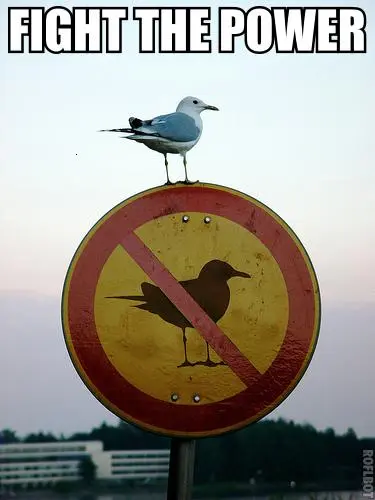There’s also the version with examples if you want to know exactly what and why it breaks.
And the git that collects all of these in one place, if you want to really nerd out.
There’s also the version with examples if you want to know exactly what and why it breaks.
And the git that collects all of these in one place, if you want to really nerd out.
It means a GPLv3 project can use something licensed as CC BY-SA 4.0 by converting it to GPLv3, as is required. E.g using a CC BY-SA photograph as a background or a splash image in a program.
And while you technically can’t take the original, yeah, practically everything except “here is the image file alone in a folder” counts as modifying and a derivative work. Resize it, crop it, change a .png to a .jpg etc - all modify the original work.
CC BY-SA 4.0 is one way compatible with GPLv3.
It does mean that anything released under older CC SA licenses aren’t, so they can’t be used in GPL projects. And MIT isn’t compatible at all.


Emulation and emulators aren’t illegal. Yuzu for example got in trouble mostly for distributing tools for circumventing copy protection and dumping roms and not for the emulator itself.
But it doesn’t really matter as nobody has money to defend themselves against something like Nintendo. Here just even the threat of it was enough to get the Ryujinx devs to fold just in case.


If you set your pages and repositories to be viewed publicly, you grant each User of GitHub a nonexclusive, worldwide license to use, display, and perform Your Content through the GitHub Service and to reproduce Your Content solely on GitHub as permitted through GitHub’s functionality (for example, through forking). You may grant further rights if you adopt a license. If you are uploading Content you did not create or own, you are responsible for ensuring that the Content you upload is licensed under terms that grant these permissions to other GitHub Users. -https://docs.github.com/en/site-policy/github-terms/github-terms-of-service#5-license-grant-to-other-users
License can’t really revoke that.
Bigger problem is the No Derivatives clause of the CC licence, as compiling or forking the code creates a derivative, so it’s now a project nobody is allowed to use (or distribute) in any other form than their exact, precompiled releases.
In fact, as the GitHub terms of service specifically require you to allow forking - as recently demonstrated by the WinAmp project - I wonder if CC ND is even possible to be used in GitHub in the first place.
The entire network is nuked in those situations, there are no accessible forks left.
I remember being jealous of a classmate of mine in the early 00’s that got the new book as a gift every year as they always had these really flashy covers with sparkly holograms and stuff.


It is still in early access and optimising the game is their current goal according to the road map, though as the whole concept of the game is about simulating every NPC properly at all times it’s always going to be really heavy game to run.
And you are right about accessibility making resource hungry games more common - they allow indies to make projects and use concepts that would have been scrapped as technically non-viable by a publisher before. Shadows of Doubt started development back in 2015, which would have meant reducing the scope of the game until it ran on a PS4. Being indie, they could just do whatever instead, and now it’s going to be enough if they can make it run acceptably on a PS5.


The etymology follows the drive-in which is basically a big parking lot you drive in to, do your ordering/eating/movie watching in your car, and then you drive out. And when you don’t stop in the middle of a drive in, but instead you continue through it, in your car, it became a drive through.
The pedantic term is a drive-up, btw.
Programmingfonts.org is another one if you just want to check some out.


Sure. But the IPv6 implementation is a bit like if we went “you know the y2038 problem of 32 bit numbers, and how goin under 1970 is sometimes hard? Lets solve it by making it start from the big bang and store time as a 256 bit integer so we don’t run out until year 3.1 x 10^69”.
IPv6 is big enough for 340,282,366,920,938,463,463,374,607,431,768,211,456 unique addresses. Are we expecting to create an universe consuming army of exponentially replicating paper clip converting robots that each need an IPv6 address or something?


IPv6 is big enough to give 10 billion unique addresses for every grain of sand on earth and still have some left over. Just in case we need to, I guess.


They went just a teeny tiny little bit overboard with the address space. Ipv4 is four groups between 0 and 255, ipv6 is eight groups of four digit hex, 0000 to ffff - e.g the Google DNS ipv4 address is 8.8.8.8. the ipv6 one is 2001:4860:4860:0:0:0:0:8888 (thankfully at least some devices allow using :: to skip all the zeroes, so it’s “just” 2001:4860:4860::8888)
But we now have enough ipv6 addresses to give more than 10 billion ipv6 addresses to every single grain of sand on earth, and still have some left over.
Assuming 1 second per swap, a 64 disk tower of hanoi would take 585 billion years to solve - it has 2^64 -1 swaps.
“discard changes” button - the 5000 “new file created” changes, specifically.